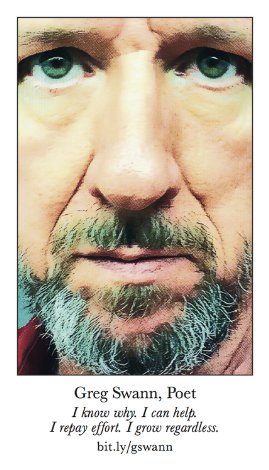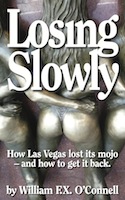
The face of “science.” Where you find tax dollars, you find rent-seeking liars. More fool you that you claim to be surprised by this palpably obvious fact.Photo by: jonathan martinez
In 2001, Michael Jennions, a biologist at the Australian National University, set out to analyze “temporal trends” across a wide range of subjects in ecology and evolutionary biology. He looked at hundreds of papers and forty-four meta-analyses (that is, statistical syntheses of related studies), and discovered a consistent decline effect over time, as many of the theories seemed to fade into irrelevance. In fact, even when numerous variables were controlled for—Jennions knew, for instance, that the same author might publish several critical papers, which could distort his analysis—there was still a significant decrease in the validity of the hypothesis, often within a year of publication. Jennions admits that his findings are troubling, but expresses a reluctance to talk about them publicly. “This is a very sensitive issue for scientists,” he says. “You know, we’re supposed to be dealing with hard facts, the stuff that’s supposed to stand the test of time. But when you see these trends you become a little more skeptical of things.”
What happened? Leigh Simmons, a biologist at the University of Western Australia, suggested one explanation when he told me about his initial enthusiasm for the theory: “I was really excited by fluctuating asymmetry. The early studies made the effect look very robust.” He decided to conduct a few experiments of his own, investigating symmetry in male horned beetles. “Unfortunately, I couldn’t find the effect,” he said. “But the worst part was that when I submitted these null results I had difficulty getting them published. The journals only wanted confirming data. It was too exciting an idea to disprove, at least back then.” For Simmons, the steep rise and slow fall of fluctuating asymmetry is a clear example of a scientific paradigm, one of those intellectual fads that both guide and constrain research: after a new paradigm is proposed, the peer-review process is tilted toward positive results. But then, after a few years, the academic incentives shift—the paradigm has become entrenched—so that the most notable results are now those that disprove the theory.
Jennions, similarly, argues that the decline effect is largely a product of publication bias, or the tendency of scientists and scientific journals to prefer positive data over null results, which is what happens when no effect is found. The bias was first identified by the statistician Theodore Sterling, in 1959, after he noticed that ninety-seven per cent of all published psychological studies with statistically significant data found the effect they were looking for. A “significant” result is defined as any data point that would be produced by chance less than five per cent of the time. This ubiquitous test was invented in 1922 by the English mathematician Ronald Fisher, who picked five per cent as the boundary line, somewhat arbitrarily, because it made pencil and slide-rule calculations easier. Sterling saw that if ninety-seven per cent of psychology studies were proving their hypotheses, either psychologists were extraordinarily lucky or they published only the outcomes of successful experiments. In recent years, publication bias has mostly been seen as a problem for clinical trials, since pharmaceutical companies are less interested in publishing results that aren’t favorable. But it’s becoming increasingly clear that publication bias also produces major distortions in fields without large corporate incentives, such as psychology and ecology.
This is not a new article. I caught notice of it from Five Feet of Fury, and Kathy Shaidle heard about it from Small Dead Animals. If you’re not as skeptical about the claims made by money-grubbing academics as you are about those proffered by money-grubbing politicians or “businessmen,” you can proudly wear the smug smirk of the successfully money-grubbed. Meanwhile, the rest of us now know precisely was was meant by the words “hide the decline”…















